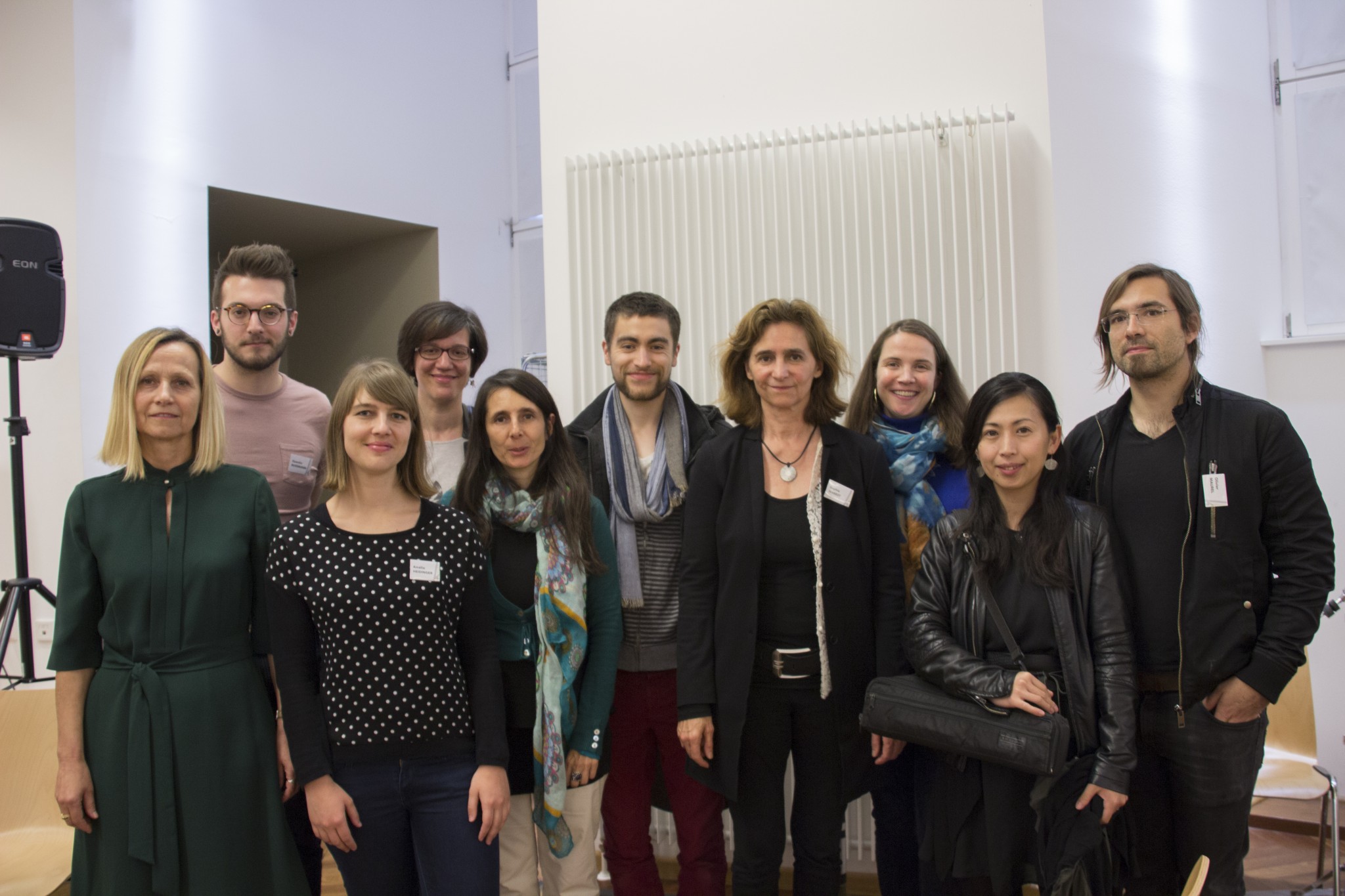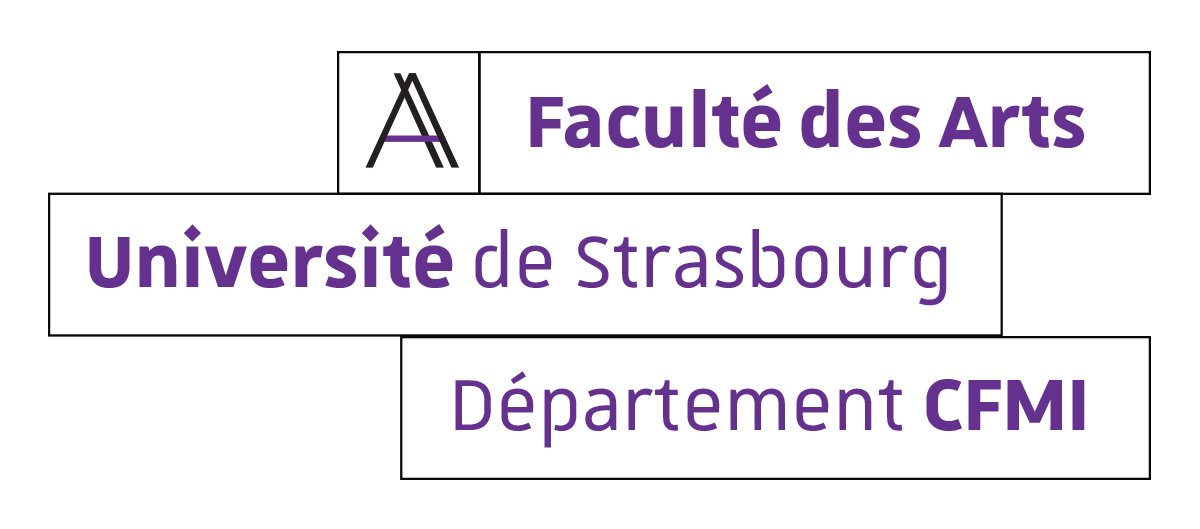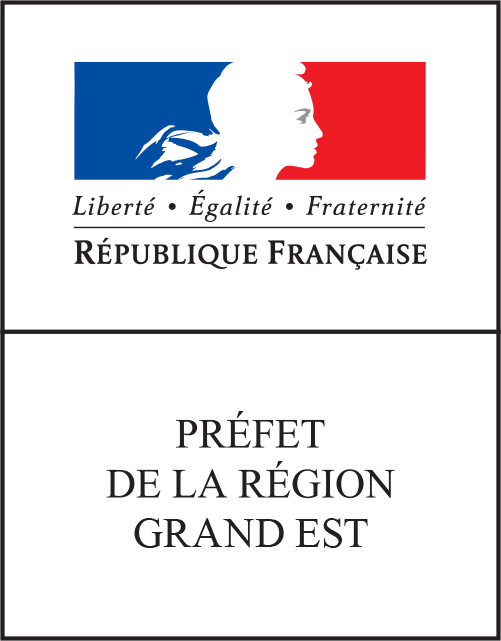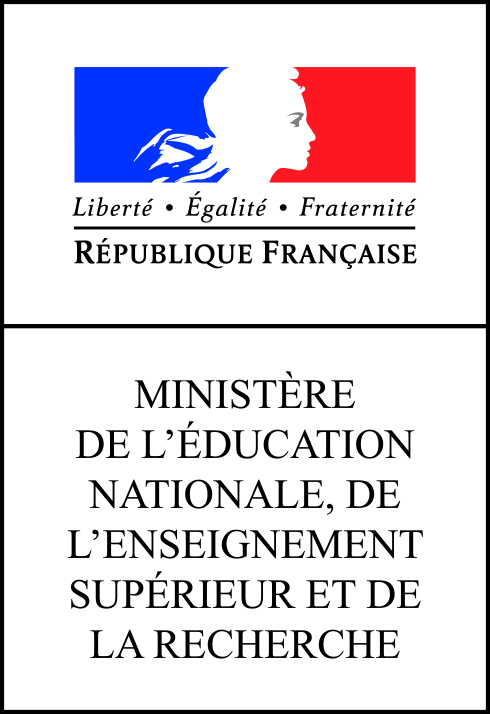- University: CFMI of Sélestat / University of Strasbourg
- Ensemble: HANATSU miroir ensemble
- School: Elementary School of Quartier Ouest/ Sélestat, Wimpfeling School
- Associated partners: ESPE of the Strasbourg Academy (Graduate School for Teaching and Education); ESAT Evasion, Sélestat; Sainte Foy Public Elementary School, Sélestat
- Concept: Creative musical action inspired by contemporary music and Japanese poetry
University: CFMI of Sélestat / University of Strasbourg
The CFMI, Sélestat (Training Centre for Musicians at School), is a department of the Faculty of Arts of the University of Strasbourg.
Under the dual supervision of the Ministry of Culture and Communication and the Ministry of National Education, Higher Education and Research, CFMI, Sélestat is part of a network that includes 8 other CFMI’s across the country. It has been located in the premises of the École Supérieure du Professat et de l’Éducation (ESPÉ) in Sélestat since 1987.
For thirty years, the CFMI has been organised by creative, open-minded professionals capable of initiating projects aimed at the democratisation of musical education. A key player in the area of artistic and cultural development, the interventional musician is a professional musician, artist and educator, who works in nursery and elementary schools in collaboration with school teachers, music teaching centres (musical awakening, Improvisational workshops, vocal and instrumental practices), in the framework of amateur collective musical practice, within cultural structures, in crèches and with various other audiences. The interventional musician participates in the cultural development of the child, the adolescent and the adult by taking part in a long-term project that promotes expression through the collective practice of music, imagination and creativity.
Training and diploma:
- Two years of study / 8 modules (120 ECTS)
1500 hours, of which 1/3 are on a diversified course, from the first year.
Articulation between technical, methodological, didactic and setting practical situations.
- Training for obtaining the DUMI (Diplôme Universitaire de Musicien Intervenant)
More information at: http://cfmi.unistra.fr
Participants in the Erasmus Musik kreativ + project [CFMI and University of Strasbourg]
- Administration and communication: Amélie Heidinger and Sarah Braun
- Department of International Relations of the University of Strasbourg: Caroline Carlot-Schmitt
- Educators:
Abril Padilla, composer: collective musical creation, performance Music and Shadows, exploration and invention with sound bodies, article About the body sound.
Emmanuelle Zanfonato, director: show Music and Shadows,scenography and construction tutorials for shadow theatre, warm-ups and body games.
Emmanuel Babbi: composer of Haïfu.
Catherine Fender, choir conductor: vocal warm-ups, the voice and creativity.
Leo Maurel, luthier: construction of instruments from recovered materials
- Students:
Promotion 2014-2016 and most particularly François Soton (trainee student in charge of the class involved in the project Musik kreativ +) and Alice Kerkhof.
Promotion of 2015-2017 students and especially Ana Laura Dajas (vocal and physical warm-ups).
- Videos / photos:
Pascal Vaissier, Department of Digital Usage of the University of Strasbourg
Quentin Bussmann, Amelie Heidinger, Noémie Lang, Pierre Desmets – CFMI
- Construction of instruments:
Leo Maurel luthier, Guy Petillon for instruments building tutorials.
With the support of Direction régionale des affaires culturelles Grand Est
CFMI Lille and Lutheries Experimental Workshop ALEx
Ensemble: Hanatsu Miroir Ensemble
The contemporary repertoire: another understanding
At the crossroads of design, interdisciplinary and intercultural connections
Established in 2008, the HANATSU miroir ensemble was the result of a meeting between flutist Ayako Okubo and percussionist Olivier Maurel, who share the desire to develop and disseminate a directory of contemporary pieces following a specific axis: the integration of media other than music to provide new ways of understanding and interpretating the contemporary repertoire.
The approach of the ensemble is multidisciplinary. It is adapted to each composer, each project, each encounter, each new experience.
Primarily focused on the human encounter in various ways, HANATSU miroir seeks to forge links, to build bridges between cultures, performers and composers, civilizations and their arts, music and its audience.
The approach of the ensemble, with variable geometry, involves alternating painting, scenography, plastic arts, dance or even theatrical forms.
Replacing music in the arts of the time, increasing the musical perceptions of a public guided by different mediums, the approach of the ensemble HANATSU mirior has enticed a large number of young composers to accompany the ensemble by writing new works for it and in the pursuit of joint projects.
Our approach
By engaging in art forms such as video, Nô theatre, arts from new technologies or calligraphy, the repertoire is equipped with new keys which, integrated the interpretation, reveal meaning, bringing fibre to the bridge woven between the composer and his audience.
The ensemble wishes to respond to an open and curious public, which is ready to be guided by the sensuality of a setting that will enable it to approach a musical repertoire which is sometimes considered “cerebral”. Sometimes this public lacks the keys to understanding and therefore cannot properly hear the music.
With these encounters, HANATSU miroir is at the crossroads of different cultures. With sound as a meeting point, form as a poetic container, and musical generosity as a common energy, HANATSU mirior is an ensemble that transcends borders.
The collaborations of HANATSU miroir: composers, collectives of artists, etc.
Hanatsu miroir finds inspiration in collaborations according to its encounters. So, with renowned composers (Toshio Hosokawa, Gabriela Ortiz, Alessandro Solbiati, Yoshihisa Taira) it tries to give a new reading to their works. With the young composers with whom it regularly works (Samuel Andreyev, Maurillio Cacciatore, Alireza Farhang, Januibe Tejera) it attempts to create an innovative common language, and then there are the engagements with Japan, Nô theatre, the dazzling Japanese cymbalist Mayumi Orai, and other discoveries with the collective Poetry 8.0 whose flexible ensemble travels to according to its different projects and corpus of poetry, or the encounters with the Greek musical culture and the ARTefact ensemble or the meeting with the burgeoning world of South American music creation and especially its Mexican composers.
Since its inception, HANATSU Miroir has played in Strasbourg, Paris, several times in Tokyo, Fukui, and currently has many projects in new countries.
Directions:
The HANATSU miroir project is one of an ensemble willing to continue to fulfill its own reflections of the place of the ensemble in the creation of contemporary repertoire:
- convinced that music has evolved largely in the meeting of new musical ideas,
- convinced that the music travels, and this journey is the origin of the rules of “savante” musical writing as well as of the oral music heritage,
- convinced finally that the contemporary repertoire can be enriched by actions of “diversion” and “exploration” of the musical “savant”.
School: Elementary School of Quartier Ouest / Sélestat, Wimpfeling
Catherine Mc Cann, director, engaged with the Quartier Ouest school for this Erasmus+ Musik kreativ+ project .
Nathalie DURGETTO, teacher of the CM1 class, agreed to take part in the Musik kreativ + project with 29 students aged 9 years old.
The Quartier Ouest Elementary School is a 440-pupil public school with 18 classes that brings together the Wimpfeling and Dorlan Schools. These two sites offer students a quality life and learning environment thanks to investment made by the municipality of Sélestat.
The school accommodates children from 6 to 10 years old spread over 5 levels of learning..
The speciality of the school is to host a bilingual “German” section where the courses are taught in equal time in French and German. The teaching of German is effective in all the other classes for 3 hours per week.
The school is developing an educational project with a strong cultural identity that closely involves students and the teaching team in dynamic activities such as: exhibitions of works of art at school, scientific exhibitions, a ceramic mural at the station, a dance performance, music, singing, theatre supervised by professional artists, participation in the “Festival of Two Languages”, a Bilingual Discovery Classes with German Schoolchildren, the Franco-German Literarture Project.
The school enjoys an outstanding location: a rich historical heritage (Regional Fund for Contemporary Art, Humanist Library, protected monuments) and natural Sélestat (Nature Reserve Illwald) give these projects a unique authenticity.
Naturally, the Erasmus+ Musik kreativ+ project caught our attention for its artistic, cultural, educational and international aspects.
Associated partners
- ESPE of the Strasbourg Academy (Graduate School for Teaching and Education)
As part of the Erasmus + Musik kreativ+ project, the CFMI of Sélestat has joined the DiCrA study days (Didactics of Artistic Creation, IDEX research allocation) organized by Grazia Giacco-Blanc, lecturer, teacher-researcher at the ESPÉ of the Strasbourg Academy.
- ESAT Evasion Sélestat
The establishments and services through Work (ESAT) are medical-social institutions whose objective is the social and professional integration of adults with disabilities.
L’Évasion is an ESAT whose speciality is to have a cultural and artistic orientation: in the visual arts, music and performance.
More:
http://www.esat-evasion.fr/
https://www.youtube.com/watch?v=dAT0J7rS8qU
A small group of artists from ESAT Evasion mentored pupils and students in the preparation and initiation of the technical performance of Shadows and its music according to the techniques ESAT had designed and developed for the show Fichu snake which was a resounding success: https://www.youtube.com/watch?v=5jLU2lXkYp8&t=421s
- Public Elementary School Sainte Foy / Sélestat
Estelle KAMM, Director
Corinne SCHILLER, Aurélie Stöckler, Isabelle Lemaire, teachers
Ms’ Lemaire, Schiller and Stockler classes participated in various stages of the Musik kreativ+ project: the performance of Music and Shadows, vocal and physical warm-ups, vocal games as gestures towards graphic notation.
Concept: Creative musical action inspired by contemporary music and Japanese poetry
The project proposes to embark on an adventure of collective musical creation.
All preparatory phases for departure are presented:
• Getting ready
• Equipping Oneself
• Choosing, making, assembling and knowing your equipment
• Get to know your team
• Go on an adventure
The journey, from discovery to musical creation, offers tools for exploring, inventing, constructing, conducting and collectively presenting a musical project.
Contemporary music and haiku
Contemporary music is the music of freedom, of all possibilities. Everything is to be invented, the corpus, the rules, etc.
All aesthetics, all experiences are allowed. The rule is to invent one’s own, to break free of all shackles and reinvent a musical environment, from the smallest to the largest of its components: to think of sound as an element of environment in addition to its traditional narrative use and dramaturgy.
The haiku is a short Japanese poem in three verses of 5/7/5 syllables, an effect of the art of language which aims to suggest through the senses, an image, a rhythm, an emotion, a state of soul. Haiku evokes a season. Haiku is an art of living. There is a repertoire of haiku set to music. The objective is to appropriate the writing of the haiku and the setting to music by exploring the fields of musical creativity opened by repertoires of contemporary music.
The haiku is a starting point that opens doors of development in a very diverse field of musical creation.
Haiku is an entry point for non-musicians. The text, the essence of the play, can be written by children. The professional (teacher, professional musician) guides the musical creation. The haiku offers a great openness for cross disciplinary projects.







